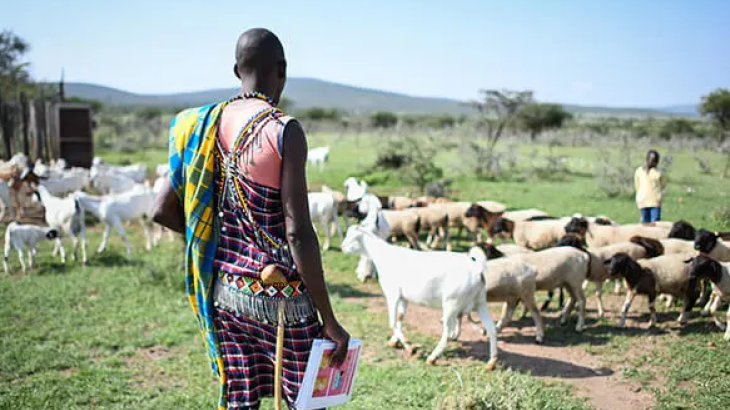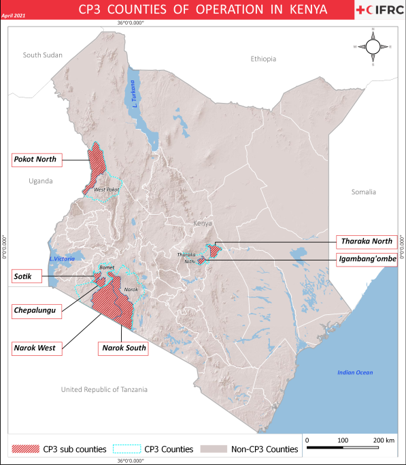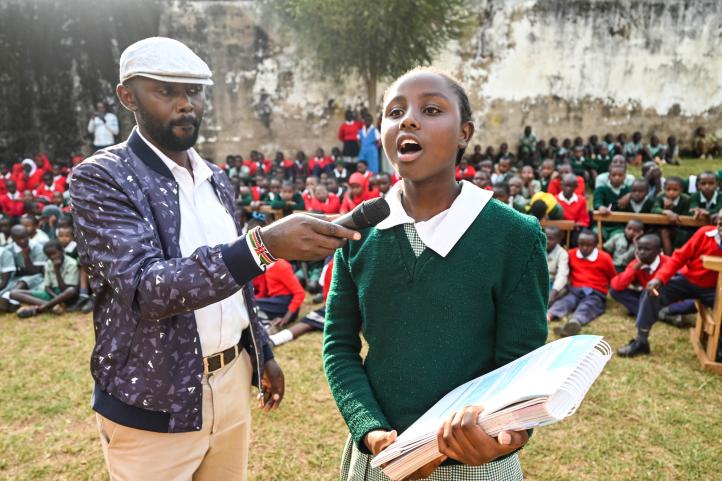Kenya Red Cross
Dates of implementation: 2019 - present
Settings: Primarily rural
Context: Preparedness/ scale-up in emergencies
Data collection system: Started with KoBo reporting system and transitioning to Nyss in 2023/2024
Partners: USAID, International Federation of Red Cross and Red Crescent Societies
Kenya is one of the hotspots for emerging and re-emerging infectious zoonotic diseases, such as Rift Valley fever, anthrax, avian influenza, African swine fever and rabies. Many communities are at risk of being exposed to these diseases due to proximity with wildlife and livestock. In communities like the Maasai, there are deep-rooted cultural connections with livestock. Kenya also faces other major health vulnerabilities including cholera, measles, polio and viral hemorrhagic fevers. There is limited reach into many communities in Kenya to detect, report and control disease outbreaks early.
In Kenya, community-based surveillance plays a crucial role in detecting, reporting, and controlling disease outbreaks early. The Kenya Red Cross, in collaboration with the Ministry of Health and Ministry of Agriculture and Livestock Development, is actively engaged to ensure early detection, timely reporting, and early action to prevent the spread of diseases.
The Kenya Red Cross has an extensive network of over 150,000 volunteers across the country, providing extraordinary reach into communities. They have strengthened the community-based referral systems by collaborating with community influencers such as teachers, leaders, and traditional healers. The community-based surveillance activities include engaging communities through house-to-house visits, school health clubs, focused group discussions, and mobile cinemas.
CBS Implementation areas within the Community Epidemic and Pandemic Preparedness Programme
Kenya Red Cross, with support from the IFRC and funding from USAID, has been working with communities to prepare for, and prevent the spread of diseases. Focused in Bomet, Narok, Tharaka-Nithi and West Pokot Counties, Kenya Red Cross is working with governments, communities, local responders, private actors and humanitarian partners to collectively prepare for and respond to epidemics.
Using a One Health approach for CBS
Engaging and empowering communities to undertake a One Health approach within a broader epidemic preparedness and capacity-building programme has proven crucial for the successful implementation of the Community Epidemic and Pandemic Preparedness Programme in Kenya to date. Community volunteers can effectively detect and take early action to contain human and animal health risks and disease events, thus contributing to global health security at a community level.
 CP3 uses an innovative approach that builds on core community health promotion and risk reduction activities to embed community-based surveillance (CBS). This approach has improved community engagement in disease prevention, earlier alerting of local health authorities and earlier action for the timely control of possible outbreaks.
CP3 uses an innovative approach that builds on core community health promotion and risk reduction activities to embed community-based surveillance (CBS). This approach has improved community engagement in disease prevention, earlier alerting of local health authorities and earlier action for the timely control of possible outbreaks.
Kenya Red Cross’ scale-up of CBS in target counties and integration with the national integrated disease surveillance and response (IDSR) framework has yielded positive results –
the Bomet County Director of Public Health noted that the programme’s interventions had improved IDSR reporting rates from 60% to 90% in 2019.
CBS alerts on animal health related hazards has let to mass vaccination campaigns driven by communities leading to 29,156 livestock and pets being vaccinated by the end of 2022 against priority zoonotic diseases including rabies and anthrax.
 Operationalizing One Health in Kenya has included:
Operationalizing One Health in Kenya has included:
-
Improving functionality of multi-sectoral One Health Teams at the county level
-
Developing training curricula and tools to operationalize CP3, aligned to national and global standards
-
Conducting training of master trainers and volunteer on epidemic preparedness in target counties
-
Engaging communities, and implementing community health activities
-
Implementing community-based surveillance for priority reportable diseases
Engaging with School groups to strengthen CBS and One Health
Kenya Red Cross has used a youth-led process for risk communication and community engagement by engaging school-going children as One Health educators and advocates. Students have proven to be effective peer educators, reinforcers of messaging at the household level, and useful mobilizing support for activities such as targeted animal vaccination campaigns.
For more information, see the "One Health in Action" Case Study from Kenya Red Cross and IFRC.
Additional Resources:
- Community Epidemic and Pandemic Preparedness Programme ("CP3")
- 2-pager: Kenya epidemic preparedness & response
- Kenya Red Cross presentation at IFRC Global Innovation Summit about CBS
- Kenya Red Cross and IFRC present on One Health in the Integrated Outbreak Analytics Network Call
- Publication in IOA Field Exchange: Triangulating CBS with other information for Neglected Tropical Diseases in Kenya
- CPHIA Poster: A multi-sectoral One Health approach for disease prevention, early detection and control
- Case Study on One Health



